Dental Implants - Tamarac, FL
Complete Your Missing Smile with the Number One Solution

“My New Smile Transformed The Way On How I See Myself”
“My New Smile Transformed The Way On How I See Myself”
What Is a Dental Implant?
Experiencing tooth loss can result in numerous complications that significantly impact oral health and general well-being. The loss of teeth may contribute to jawbone deterioration, misalignment of adjacent teeth, periodontal issues, challenges in eating, and a decrease in self-confidence. At The Dental Place of Tamarac, we recognize the enduring challenges of missing teeth. We proudly provide various dental implant solutions in Tamarac, FL, to enhance oral health!
Dental implants are small, screw-like fixtures surgically inserted into the jawbone to replace absent teeth. Comprising of three parts: the post, the abutment, and the crown, dental implants restore the appearance of your smile, enhance chewing efficiency, and enhance your overall oral health. With the help of dental implants, you can experience a lifetime of vibrant and healthy smiles!
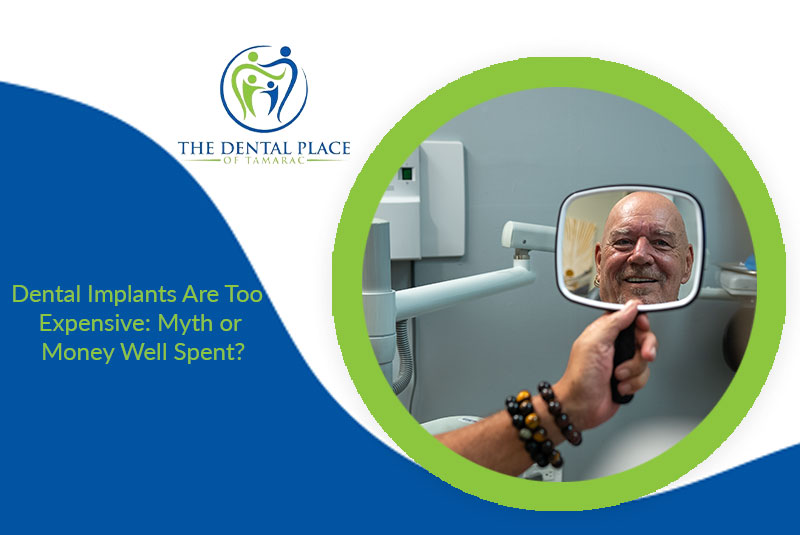
- Dental Implants Are Too Expensive: Myth or Money Well Spent?

Dental Implants Offer Many Benefits
- Restore 99% of normal chewing strength
- Look and feel completely natural
- Prevent jawbone loss
- Preserve the health of the gums and surrounding teeth
- Prevent other teeth from shifting
- No dietary restrictions
- Rebuild the beauty of your smile
- They last decades without frequent adjustments and replacements
Smile Solutions for Every Dental Need
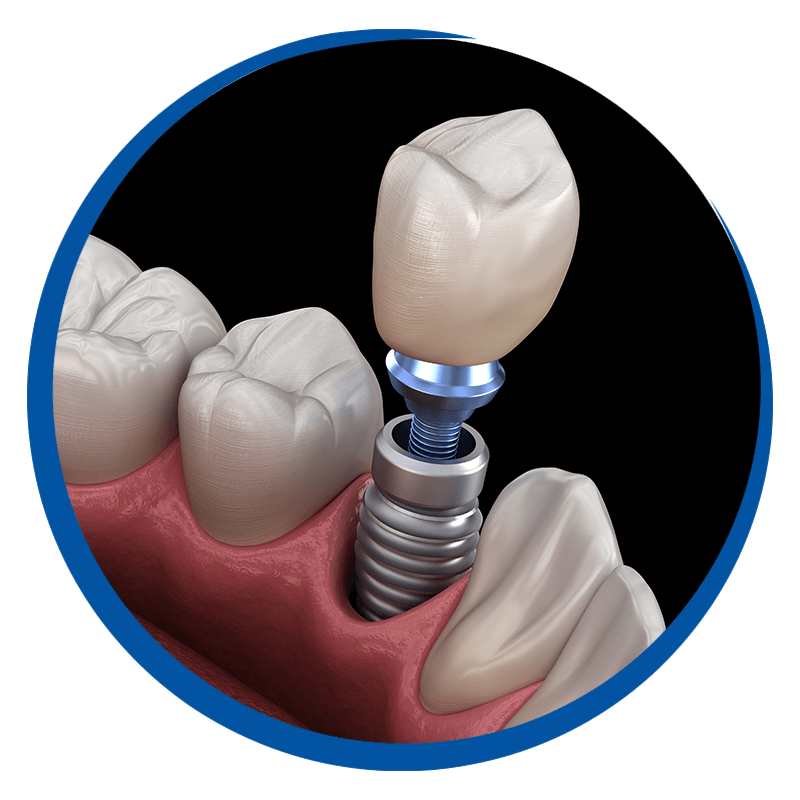
Single Implants
A single dental implant replaces a single missing tooth. They are regarded as one of the most efficient and enduring options for replacing a lost tooth, as they replicate a natural tooth’s aesthetic and functional characteristics.
A suitable candidate for single dental implants should have good dental and overall health and sufficient jawbone to support the titanium rods. Those with at least one missing tooth and a fully developed jawbone qualify for single-tooth implants.
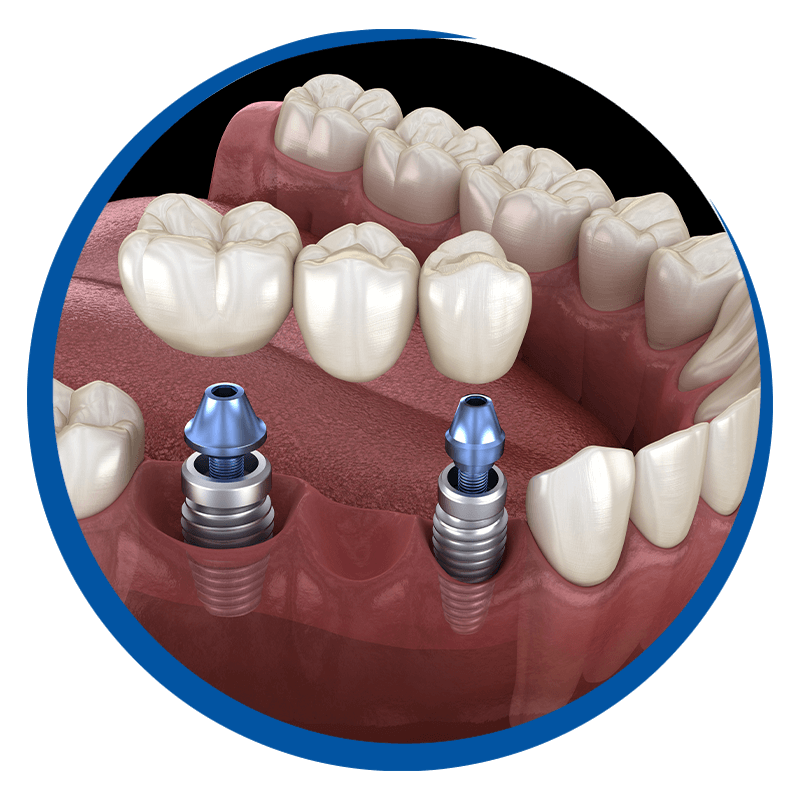
Dental Bridges
Dental bridges bridge the gap created by one or more missing teeth. A dental bridge consists of two or more crowns placed on the teeth adjacent to a gap, known as abutment teeth, along with one or more artificial teeth in between.
The artificial teeth, called pontics, can be constructed from materials such as gold, alloys, porcelain, or a combination thereof. Dental bridges are anchored by either natural teeth or dental implants.
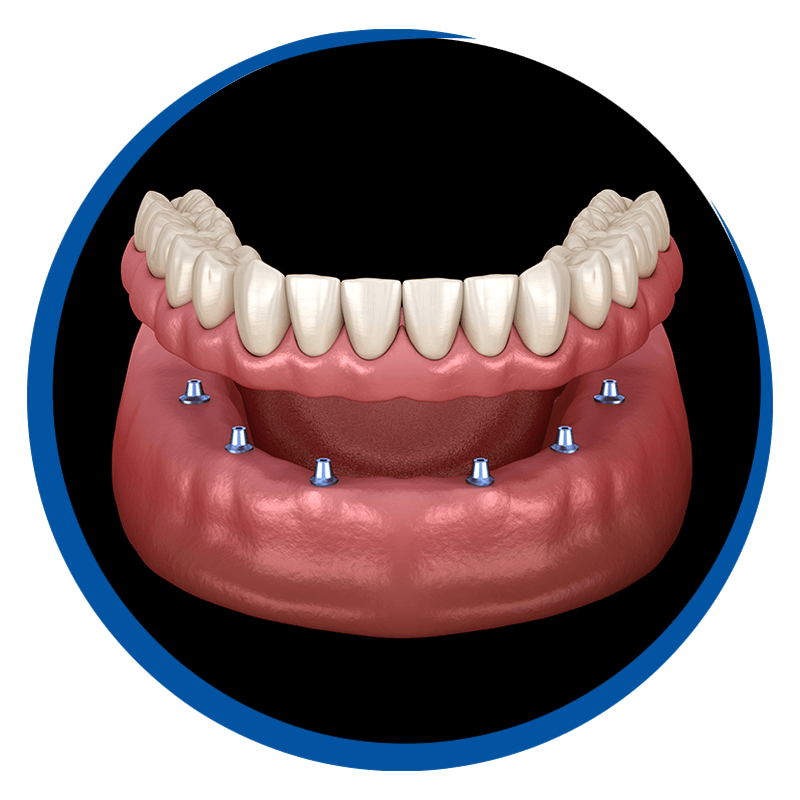
Implant Supported Dentures
Implant-supported dentures are dental prostheses that use dental implants to securely anchor a removable denture, providing enhanced stability compared to traditional dentures. This innovative solution helps prevent bone loss in the jaw and allows for better chewing function, improving patient comfort and confidence.
With implant-supported dentures, patients can enjoy a more natural appearance and greater convenience, as the implants help keep the denture securely attached, minimizing the risk of slippage.
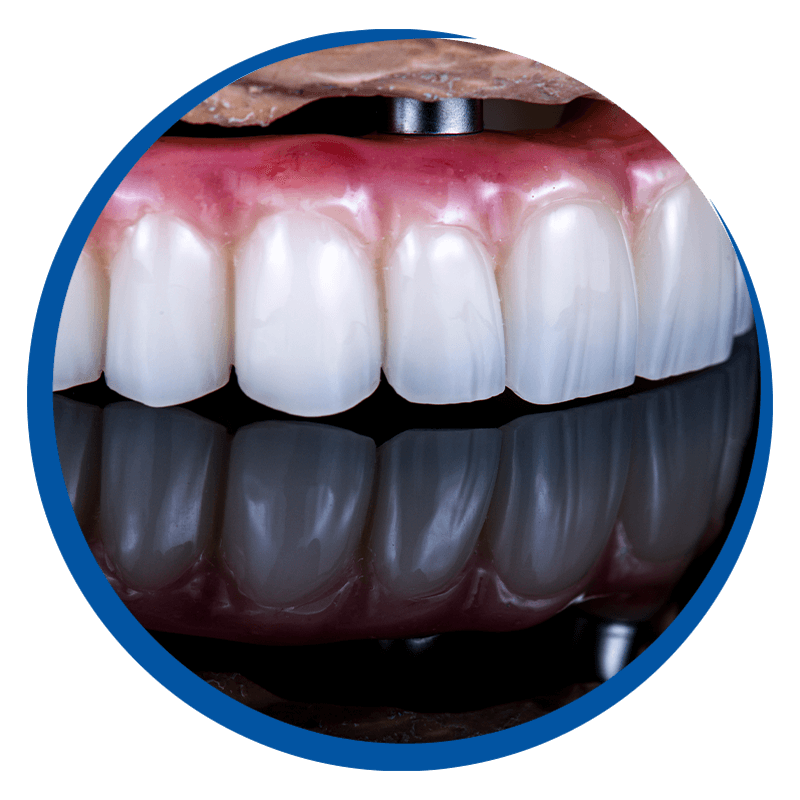
All-on-X Full Mouth Dental Implants
All-on-X full arch dental implants are a revolutionary solution for patients with missing or compromised teeth. They provide a complete set of functional teeth supported by just a few strategically placed implants.
This treatment allows for the placement of a fixed prosthesis in a single day, often called “teeth in a day,” enabling patients to leave the dental office with a new smile almost immediately. By utilizing advanced techniques and technology, All-on-X implants restore aesthetics and function and help preserve jawbone health and overall facial structure.
A Permanent Smile In Just Four Appointments
Consult & Planning
Treatment begins with a consultation, during which we’ll explore your concerns and discuss how dental implants can enhance your quality of life. We will also discuss your dental history, smile goals, and any relevant medical information.
If you are determined to be a suitable candidate for dental implants, we’ll take precise measurements and digital diagnostic images to lay the groundwork for your personalized smile design. Every aspect of your new smile will be tailored to you, including the shape and color of each tooth, ensuring a harmonious match with your facial features, gum line, and lip structure.
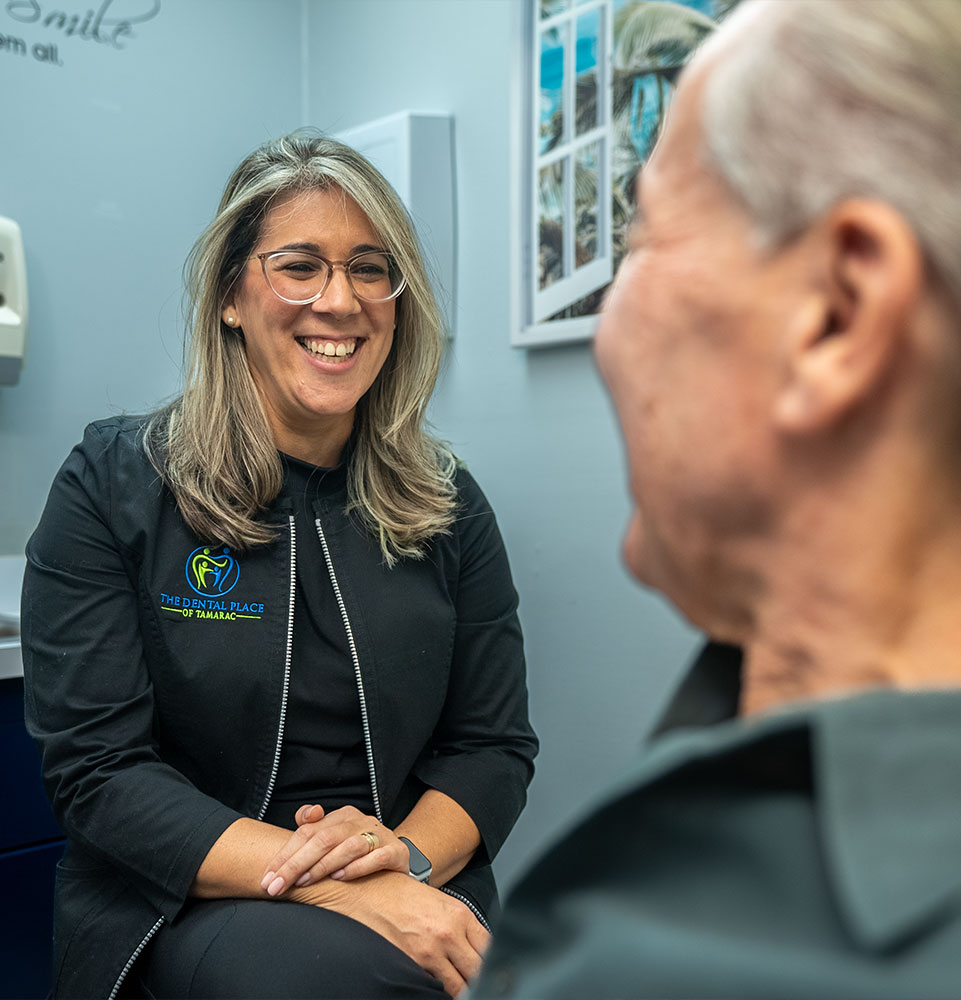
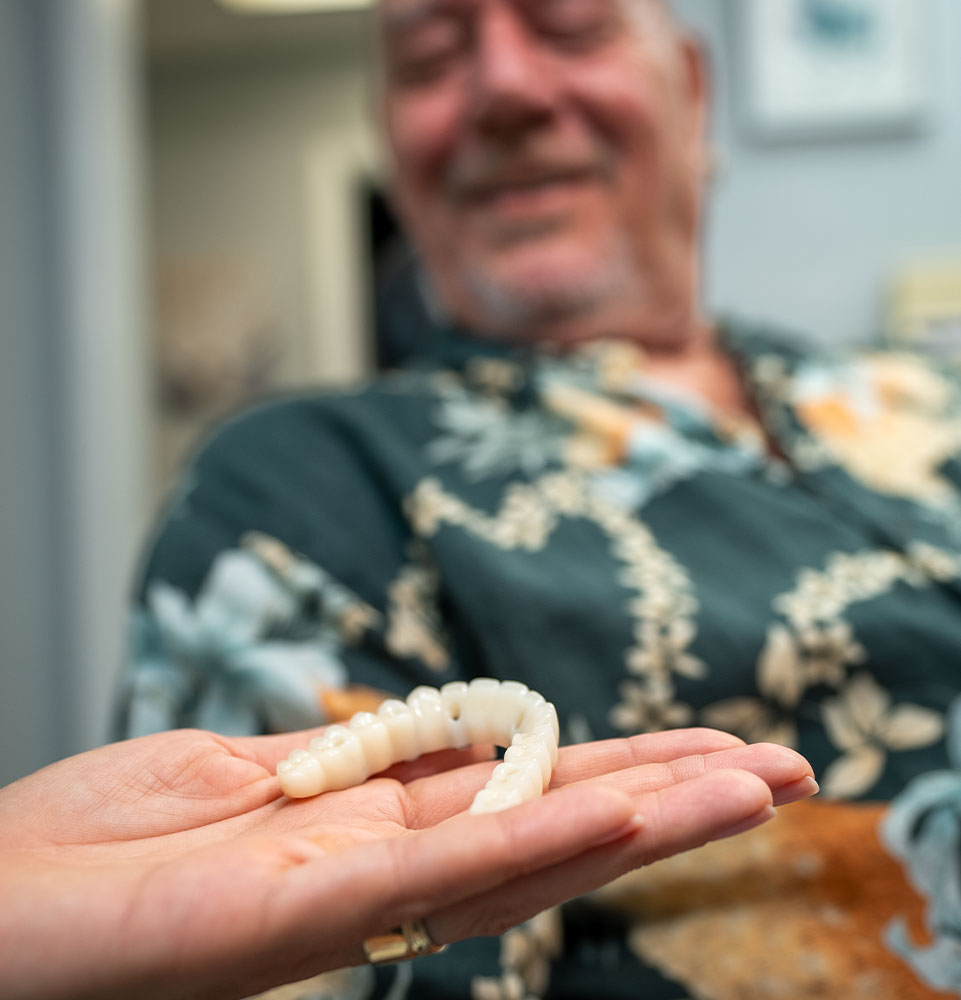
Procedure & Same-Day Teeth
Follow-Up Appointment
After your dental implant surgery, a follow-up appointment is scheduled to monitor your healing progress and ensure the implant integrates well with the jawbone. During this visit, we’ll check for any signs of infection, adjust temporary restorations if necessary, and provide further guidance on caring for your implants during the healing phase.
This follow-up is essential for ensuring that everything is on track and your implant is stable. We’ll answer any questions about the healing process and prepare you for the next step.
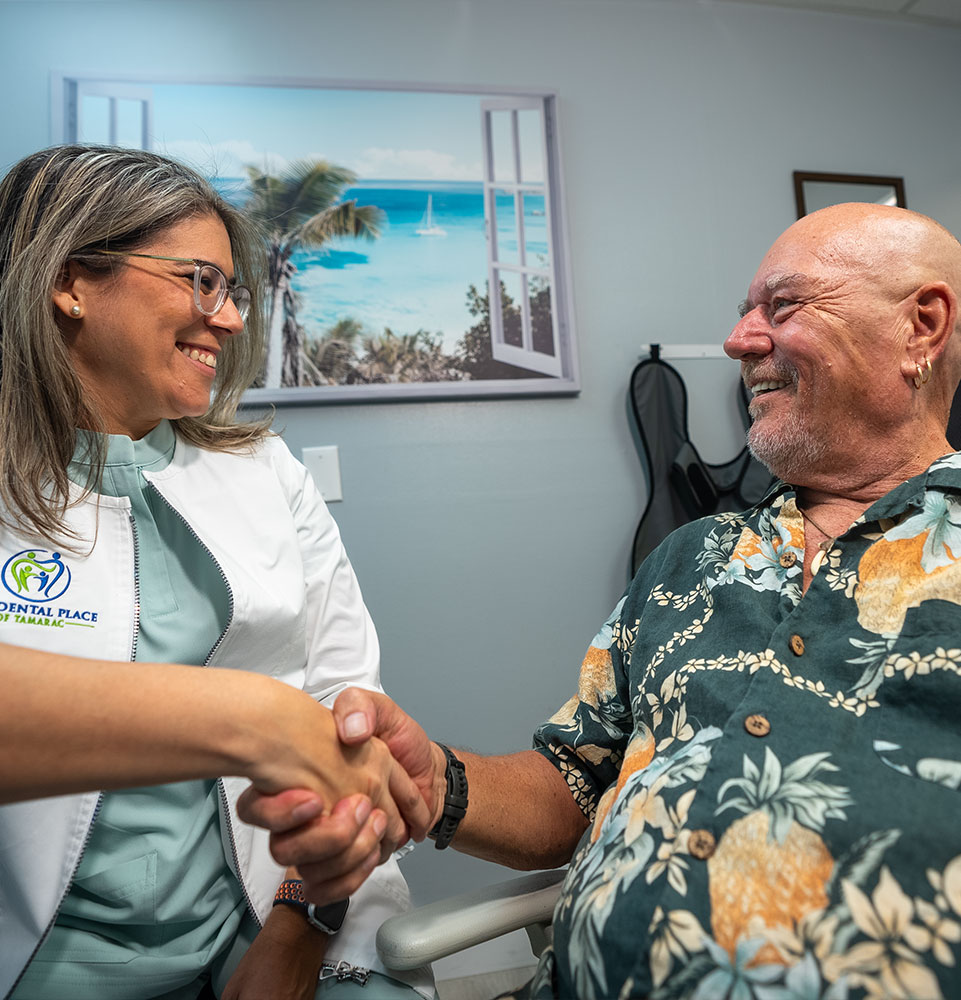

Healing & Final Restorations
The healing period typically takes a few months as the implant fuses with the jawbone during osseointegration. Once the healing is complete, you’ll return to our dental office to receive your permanent restoration, whether it’s a crown, bridge, or full arch of teeth.
This final step involves placing the custom-designed restoration onto the implant, giving you a fully functional and natural-looking smile. Dental implants will last many years, and with proper care, they provide a beautiful and durable solution for missing teeth.
Am I A Candidate for Implants?
Common Dental Implant FAQs
Generally, this is not a good idea. It is generally much better not to attach implants to teeth. We frequently attach implants, which can improve strength and work well. So, in a case like this, although it may be more expensive to place two implants instead of one in the short term, the long-term success is likely to be much better with the two implants.
In most people who miss their upper back teeth for an extended period, the maxillary sinus is increasing downward. It is the size of a pea at birth and progressively grows as the skull matures. This growth is at the expense of the surrounding bone. If you are considering replacing those upper back teeth with fixed teeth that stay in all the time, it may be necessary to perform a sinus elevation procedure to allow room for the placement of dental implants into this area to support those teeth. This involves placing bone and/or bone substitutes into an area previously occupied by the lower part of the maxillary sinus. Most importantly, this procedure increases bone use to place implants and restore the missing back teeth.
In most cases, some form of treatment is possible with the new options available today in dental implants. We encourage people to get help as soon as possible if they already have problems with their current situation. These problems include excessive use of denture adhesives, chewing only soft food, inability to taste some foods, constant mouth sores, and unhappiness with the appearance of one’s teeth and bite position (in some cases, the nose and chin getting closer together). The sooner we correct the problems with dental implants, the more choices one has available for treatment. If you have any or all of the above symptoms, implants can very well be the answer for you.
It is not necessary to have an implant for every tooth being replaced. The number of implants required to provide support depends on the type of implants used and the type of teeth (removable vs. non-removable) attached to the implants. In most cases, a thorough oral exam and panoramic X-ray are necessary to determine which implant can be used and how many must be used. Sometimes, additional X-rays or CT scans are used in more complicated cases.
Because of the advances in implantology, there are now more choices and techniques. It is rare for a person to not be able to receive an implant or a combination of implants. Today, we have many types of implants designed to accommodate multiple problems.
Teeth with root canals can fracture more quickly than other teeth because they are weaker and somewhat dehydrated. They can sometimes be as brittle as glass. In the past, the best available treatment was to remove the tooth and file down the adjacent teeth to make a bridge – caps on the neighboring teeth with an attached “dummy” tooth between. Sometimes, this still is the only way. However, in many cases, an implant can replace the fractured tooth, and we will not need to grind down a tooth at all.
Schedule An Appointment
I understand the information disclosed in this form may be subject to re-disclosure and may no longer be protected by HIPAA privacy regulations and the HITECH Act.
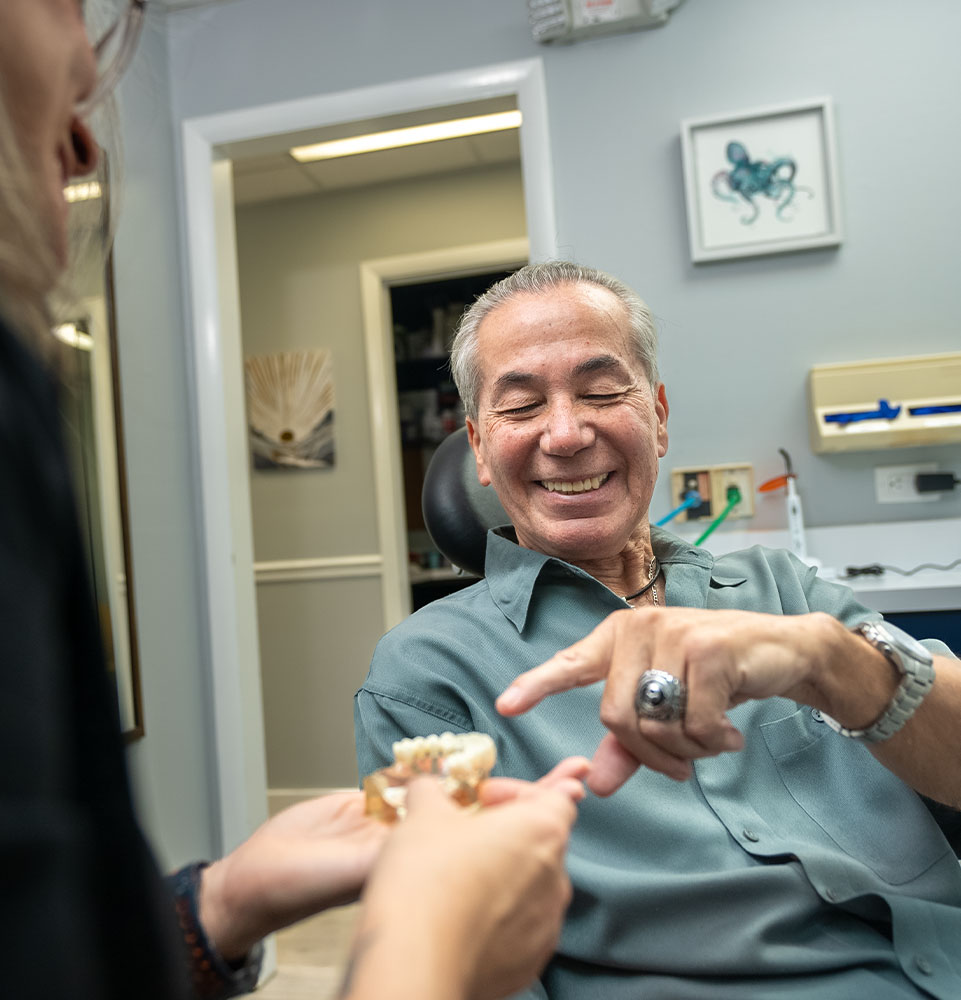
Find out if you're a
candidate for dental implants
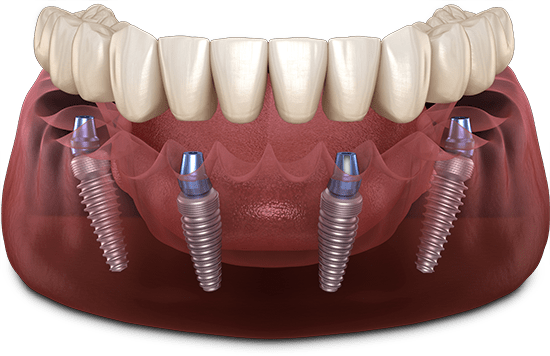
Answer the Following Questions To Learn more about our pricing and financing options.


